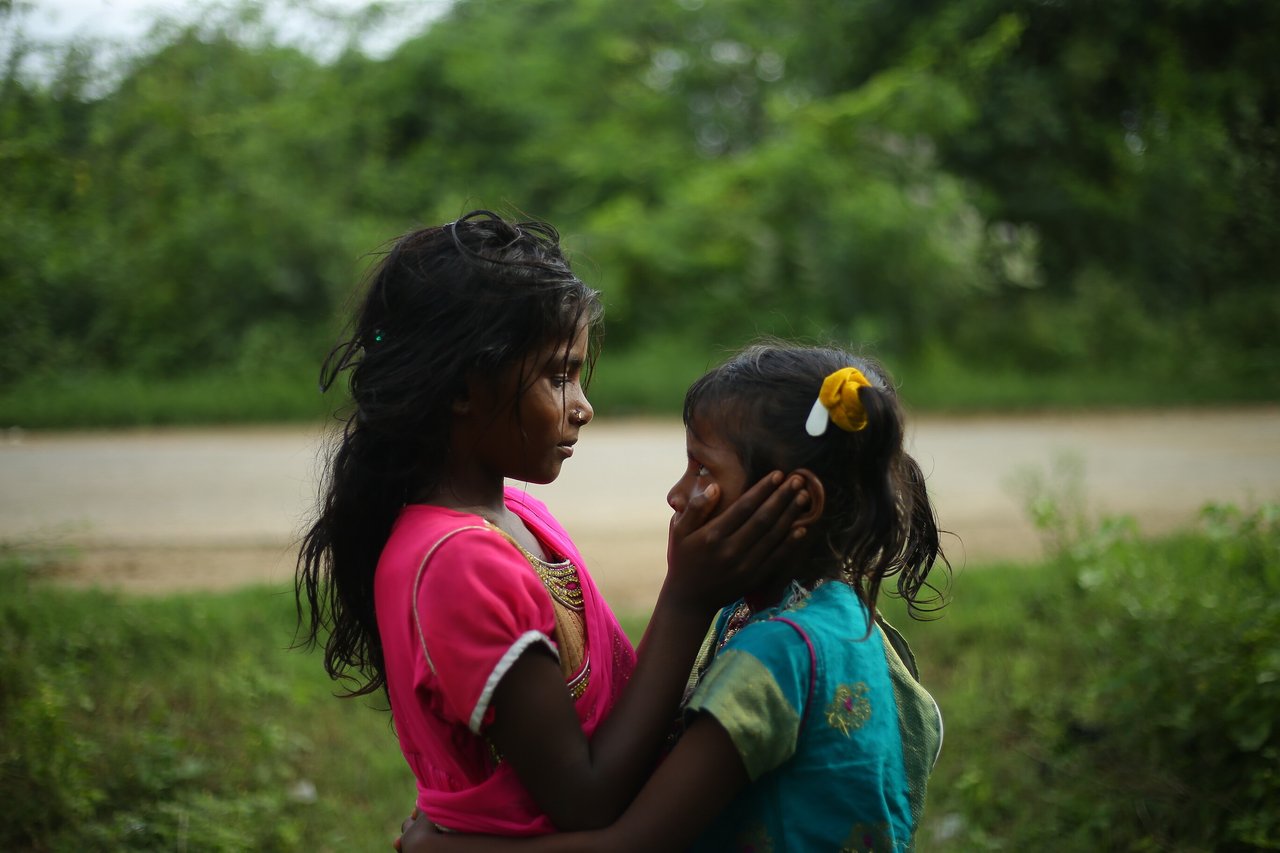Freedom is on the move: Vijayalakshmi and Nandini's story

At International Justice Mission, we believe there is hope even in the darkest places—and that freedom gathers momentum through the courageous steps of ordinary people.
A villager who opens her door.
A government official who knows how to act.
A mother who travels 400 kilometres to bring her daughters home.
Each step matters. And sometimes, it begins with the quiet courage of a child.


Step One: The whisper to run
Nine-year-old Vijayalakshmi and her seven-year-old sister Nandini were living with their parents on a remote duck farm in Telangana, India. After heavy rains damaged their home in neighbouring Andhra Pradesh, the family accepted the farm work and a one-time payment of 2,000 rupees (about $24 AUD), in return for food and basic shelter.
They worked for several months. When the parents asked to return home to access a welfare program, the owner allowed it, on one condition: The girls had to stay behind to fulfil the family’s contract. Trusting the owner who had treated them well so far, the parents agreed, never imagining the suffering their daughters would endure in their absence.
Forced to work under threat of violence, the girls endured long hours caring for ducks and slept beside them on the ground with only a dupatta (a light scarf) to keep them warm. When they made mistakes, they were beaten and deliberately kept apart. They longed for freedom.
One day, while the owners were out, Vijayalakshmi whispered, “Come, let’s go.” Nandini hesitated. But they ran, hearts pounding, until they reached the road.


Step Two: The courage to keep going
The sisters kept running in search of help.
One person stopped to ask questions but then drove off. Another turned them away. But Vijayalakshmi and Nandini pressed on.
Finally, a woman saw their scars, listened and took them in.
When the duck farm owner’s wife arrived and tried to claim them as her own daughters, the girls stood their ground.
To protect the girls, the woman moved them to a separate room and called the police.


Step Three: The power of a trained response
When police and child welfare officials arrived, they recognised the signs of bonded labour—thanks to an IJM-led workshop they had attended just months earlier. They quickly took action, calling IJM to assist. Together, they brought the girls to safety.
The girls’ parents were notified. Without hesitation, they travelled across the state to bring them home. They were heartbroken to see the physical state of their daughters due the abuse they endured. “There were so many scars on Nandini’s body,” their mother said. “Even when I cooked food, they ate in a hurry, as if there wouldn’t be enough. It broke my heart.”
Now safe at home, the girls are beginning to heal. IJM and a local partner are supporting their aftercare, education and long-term recovery. When asked how she feels now, Nandini simply said: “I am peaceful.”

Step Four: The movement that makes it possible
The need is still great:
-An estimated 50 million people are trapped in slavery worldwide.
-Of those trapped in slavery, 1 in 4 is a child.
-In India alone, around 11 million remain in bonded labour.
Yet there is hope. This rescue wasn’t an isolated moment. It was part of a growing movement.
IJM’s unique approach focuses on strengthening public justice systems—so violence can be stopped before it starts.
And it’s working.
After more than 20 years in India, IJM has:
Helped bring over 422,500 people to freedom*
Supported more than 5,300 survivors through aftercare since 2014
Trained over 177,000 justice officials and community leaders
To help bring this reality to people across India and across the globe IJM is:
- Rescuing victims from slavery and providing aftercare that supports their long-term recovery and empowers them to thrive.
- Running training sessions across the country to equip survivors and their families to understand their rights and recognise the signs of bonded labour.
- Offering legal support to survivors so that perpetrators are held accountable with just sentences, preventing them, and others, from committing further crimes.
All of the images used are of the real sisters Vijayalakshmi and Nandini who are now free to dance, play, and dream for their future like every child should.
There are millions of children just like them who are still waiting for freedom.
Together, we can move faster, reach farther, and bring lasting change.
Thank you for walking with us. Will you take the next step today and donate to IJM?
*42,500 people were brought to freedom through rescue operations in India. From 2014 to 2021, IJM’s program helped the Tamil Nadu state government achieve an 81.9% relative reduction in the prevalence of bonded labour. This led to the freedom of an estimated 380,000 people who had been trapped in bonded.